Ryan Hall's Blog, page 291
February 9, 2016
Chasing Rio, Part 2: Meb’s Support System
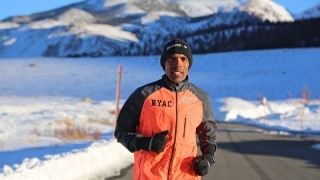
The second episode of “Chasing Rio: Meb’s Road to the 2016 U.S. Olympic Trials” presented by the Rock ‘n’ Roll Marathon Series follows Meb Keflezighi during his final long run before the U.S. Olympic Trials Marathon. We also take a deeper look into Meb’s support system that helps him chase his dream of being an elite distance runner.
Stay tuned for more episodes of “Chasing Rio” leading up to the 2016 U.S. Olympic Trials marathon in Los Angeles on Feb 13.
RELATED: Chasing Rio, Part 1: Meb’s Quest for Rio
The post Chasing Rio, Part 2: Meb’s Support System appeared first on Competitor.com.
Boston-Bound: Focus On Building Strength With 10 Weeks To Go
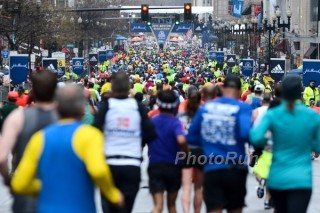
Photo: PhotoRun.net
In the first article in this series, you learned the ideal workouts for this early stage in the training. You were also encouraged to seek out routes that mimic the Boston course since you’ll need to do lots of course-specific running in the coming weeks. And, if you need to lose a few pounds to reach your ideal racing weight, now—while we’re still in the early part of the training plan—is a great time to do so.
In this second article, let’s talk about the best workouts for weeks 3 and 4, or 9 and 10 weeks out from race day.
I want to reiterate that I’m just going to present the key workouts and long runs in each week. Each reader will be different in the number of runs completed each week, so I’ll let you fill in the other easy runs, cross-training and off days based on your usual running schedule.
Week 3
Our focus with 10 weeks to go until race day continues to be on improving VO2max, leg turnover, leg strength and mental toughness. I suggest another hill workout and a long run for this week. Advanced runners accustomed to doing two workouts and a long run each week can do another progression run as we did in Week 1. The main difference in this week’s workouts is that we’ll do a few more hill repeats and extend the total time of the progression run.
Workout No. 1: Hill Repeats. Warm up with 15-30 minutes of easy jogging, then run 8 to 12 times up a moderately sloped hill (6-8 percent grade) at 5K effort or harder for 60 to 75 seconds. Jog back down the hill as recovery between repeats, then cool down with 15-30 minutes of easy jogging.
Workout No. 2 (advanced runners): Progression Run. Run easy for 70-90 minutes with the last 10-20 minutes at a slightly faster pace (around tempo effort).
Long Run: 2:00-2:30 for sub-3 hour marathoners; 2:30-3:00 for 3+ hour marathoners.
Again, your goal is to complete these long runs on as little external sugar as possible. Slow-release carbohydrates are acceptable to get you through the run (if you need them), but try to limit fast-acting sugars like gels and sports drinks. We are trying to teach your body to become ultra-efficient at using your internal energy stores. We’ll practice race fueling later in the training cycle but for now, we want to limit fueling.
RELATED: Carbohydrate Manipulation For Better Performance
We also want your brain to get used to running in a fatigued and low-fuel state, so that on race day your brain won’t perceive marathon fatigue as anything it hasn’t experienced before. According to the “central governor” and other psychological models, your brain won’t “cut the power” to the working muscles. A happy brain = less fatigue and more power.
Week 4
If you’ve followed my advice over the years, you know that every few weeks, I suggest you take a “down” week where you reduce the training volume by 15-20 percent to allow the musculoskeletal (the muscles, tendons, ligaments, bones and fascia—the tissues runners most often injure) and the mental systems to catch up and stay fresh and ready. An example would be if you normally run 40 miles per week, cut this week back to around 30-35 miles. You can accomplish this by omitting an entire run (i.e., take an extra rest day) or reducing the duration of some runs across the week. It’s your call.
In this down week, I have my athletes do their first “test” workout. It’s called a Steady State run (check out the McMillan Calculator to get your exact pace) and it’s a continuous run at an easy to medium effort. This pace is slightly faster than your easy run pace but isn’t as fast as a tempo run.
Steady state runs test your aerobic threshold. The aerobic threshold isn’t as well known as the lactate or anaerobic threshold but it’s vitally important for marathoners. It’s the point where lactate begins to gradually rise in your blood. This is in contrast to the lactate/anaerobic threshold, which is the point where lactate begins to rise rapidly.
When running at your easy run pace, lactate levels are low, barely above resting levels, because the lactate shuttle is removing the lactate as fast as it’s being produced. As you transition from your easy run pace to steady state pace, your lactate levels increase but only slightly. If we stay in this zone, the lactate shuttle gets a good workout and this is exactly what we’d like to see. If you run faster, e.g., tempo run pace, then the lactate shuttle reaches maximum capacity. We’d like to stay away from that in this steady state run and for marathoners, efficiency in the lactate shuttle is really important.
Workout No. 1: Steady State Run. Warm up with 5-10 minutes of easy jogging, then run 30-45 minutes at steady state pace. Cool down for 5-10 minutes when you’re done. Resist the temptation to progress to tempo run pace. Keep it easy-medium for the entire run and try to see how easily you can run at steady state pace.
Workout No. 2 (advanced runners): Progression Run. Run easy for 70-90 minutes with the last 10-20 minutes at a slightly faster pace (around tempo effort).
Long Run: 90-minute Progression Run. In this recovery week, I suggest you run a shorter long run. But, instead of just running easy, pick up the pace every 30 minutes. Start the run slower than you normally would and 30 minutes into it, progress to your usual long run pace. Finally, in the last 30 minutes. pick up the pace a little more (the effort will feel like your steady state pace). It’s a fun, shorter long run to finish off your recovery week.
The post Boston-Bound: Focus On Building Strength With 10 Weeks To Go appeared first on Competitor.com.
Brooks Prints Elite Marathoner Trading Cards
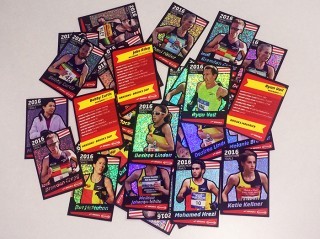
Brooks put out a set of promotional trading cards to highlight its runners in the 2016 U.S. Olympic Trials Marathon race on Feb. 13 in Los Angeles.
For the past several years, Brooks has produced promotional trading cards for the track athletes and marathoners it sponsors. (Think baseball cards, only with runners!) Here’s a look at the 2016 U.S. Olympic Trials trading cards set. In each pack, there are 15 cards with a glittery, holographic background (but no bubble gum sticks!) highlighting Brooks runners such as Desiree Linden, a 2012 Olympic marathoner, and Ryan Vail, one of the fastest U.S. Olympic Trials Marathon qualifiers with a 2:10:57 PR. On the back of each card, the athlete’s nickname, racing style, PRs, Twitter handle and other details are called out. Here’s a sampling of some of the best ones:
Desiree Linden’s Walk Up Song: “Sympathy for the Devil,” The Rolling Stones
Ryan Vail’s Race-Day Hashtag: #PutOnYourBigBoyPants
Katie Kellner’s Celebratory Drink: The tears of my competitors.
Jen Rock’s Racing Style: Blissful, Salty, Mysterious
Bobby Curtis’s nickname: “Ole Tex”
Luke Humphrey’s nickname: “Mr. Pants”
Dot McMahan’s Celebratory Drink: Belgian wit beer
Clint Verran’s Nickname: Old Man Verran
Melanie Brender’s Race-Day Hashtag: “I prefer race-day hash browns”
Melissa Johnson-White’s Celebratory Drink: Dirty Martini
Mohammed Hrezi’s Nickname: Mo Daddy
Desiree Linden’s Race-Day Hashtag: #DEStinationaRIO
The post Brooks Prints Elite Marathoner Trading Cards appeared first on Competitor.com.
Watch the Trailer for Season 5 of Salomon Running TV
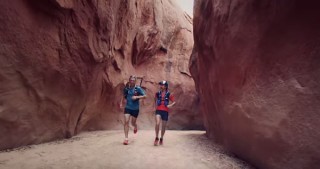
The acclaimed series Salomon Running TV is back in 2016 with 11 new short films following runners around the world, in places like Japan, Alaska, Iceland, Utah and more.
Here’s a sneak peek of what to expect this year. The first episode is expected to launch on March 1.
The post Watch the Trailer for Season 5 of Salomon Running TV appeared first on Competitor.com.
February 8, 2016
Skechers Extends Contract With Meb Keflezighi Through 2023
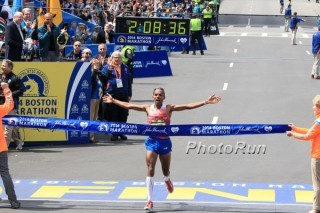
Meb Keflezighi's 2014 Boston Marathon win—in Skechers shoes and apparel—was a groundbreaking moment in U.S. running.
Meb Kefelzighi and Skechers are staying together for another seven years.
Skechers Performance announced Monday that they have extended its sponsorship deal with Keflezighi through 2023. Skechers will remain Meb’s official footwear and apparel sponsor and will continue to feature Keflezighi in marketing campaigns. It will also work with the 40-year-old on footwear introductions.
“Being 40 years old and training for the Olympic Trials is a huge achievement and Skechers Performance has helped make this possible,” Keflezighi said in a release. “They know what it means to be a partner and working with the brand to help create the best running shoes possible has been a rewarding experience. It’s not something many athletes have the opportunity to do.”
Keflezighi first signed with Skechers in late 2011, and he has had great success since then. He won the 2012 U.S. Olympic Trials marathon in Houston, then finished fourth in the London Olympics marathon. Less than two years later, he won the 2014 Boston Marathon wearing his namesake Skechers GoMeb Speed 3. He is currently set to compete in the 2016 U.S. Olympic Trials marathon on Saturday, where he’s one of the favorites to make the Olympic team. He will again wear a version of GoMeb Speed 3s in Los Angeles.
Keflezighi is the only runner in history to win the Boston Marathon (2014), New York City Marathon (2009) and an Olympic medal (silver medal, 2004 Olympic marathon).
“Working with Meb has been an incredible journey and we are truly honored to have not only a star athlete on our team, but an inspirational person,” said Rick Higgins, SVP of Merchandising/Marketing for Skechers Performance. “Meb’s motivation is contagious. Anyone that has the pleasure of meeting him knows what I mean. He is a phenomenal role model, an essential ambassador to the sport, and a champion on and off the course. We are excited to continue working with Meb, as he has truly become a part of the Skechers’ family.”
RELATED: Meb + Skechers = Huge Success Story
The post Skechers Extends Contract With Meb Keflezighi Through 2023 appeared first on Competitor.com.
First New Balance Run Hub Opens in Boulder’s Flatirons Running
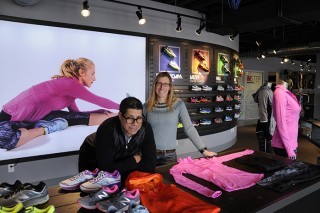
Henry Guzman and Sarah Rebick inside the new Flatirons Running New Balance Run Hub store in Boulder, Colo. Photo: Brian Metzler
Most people would expect great service and the best new shoes and gear at their local running store. But what about a Strava leaderboard that highlights local challenges, a custom footbed service, the chance to get some physical therapy work done, plush leather chairs to hang out in and, oh, free coffee too?
Just as recreational running and retail buying patterns have changed in recent years, so too have running stores. While there are still many mom and pop type stores that thrive as they did 20 years ago, the most modern of running specialty shops in the U.S. combine leading-edge elements of design, technology, functionality and comfort and to engage and sustain its local running community.
Instead of merely being a place to buy shoes and apparel, the best running stores in the U.S. are becoming places to hang out and interact with other runners—through events like happy hour fun runs, athlete Q&As, high school spike nights, local training club workouts and even running book club gatherings.
In a nutshell, that’s the vibe behind the New Balance Run Hub store that was unveiled recently within Flatirons Running Company in Boulder, Colo. It’s a unique set-up to be sure. While one side of the store sells shoes and apparel from numerous brands, the other side is essentially a massive New Balance concept store. It’s a unique mix that blends everything a running shop normally sells from a wide range of brands—shoes, apparel, accessories, nutrition—with an amazing, state-of-the-sport New Balance showroom, a comfortable sitting area, complimentary coffee bar, treadmills for gait analysis and training runs and physical therapy and massage treatment rooms.
It’s not the first running shop to combine some of those elements, but few stores rival the stunning layout, atmosphere and amenities of this one.
The newly redesigned store held its grand opening party on Feb. 6, but the idea has been in the works for more than a year. Flatirons Running opened in August 2014 as a 3,000-square-foot shop, but with the addition and remodel the entire space is now about 7,800 square feet (including backshop storage and offices). New Balance invested heavily in the makeover and expansion of the original shop (made possible when a fly fishing store moved from the adjacent space), but Flatirons Running owners Henry Guzman, R.L. Smith and Tricia Vieth are the ones responsible for making it profitable.
“It’s all about community,” Guzman says. “But it’s more than just selling shoes and gear. It has to be. You want people to feel comfortable so they can meet other runners there, sit down and talk about a trail run, plan for a race or just hang out and stretch for a bit.”
PHOTOS: A Look Inside Flatirons Running New Balance Run Hub
The exquisitely re-designed shop includes locally sourced fixtures—including a reclaimed wood New Balance sign and coffee table—and local scenic imagery that highlights Team New Balance athletes (and Boulder residents) Jenny Simpson, Emma Coburn and Mirinda Carfrae. The Flatirons Running New Balance Run Hub also features the custom footbed business of Flatirons co-owner R.L. Smith, who had operated his InStep business in the original space since 2009.
While the newly remade store is still focused on community, it’s also aimed at gaining a bigger foothold in the competitive Boulder marketplace, as well as serving as a testing ground for initiatives and products New Balance could develop on a national or global scale, said New Balance executive vice president Chris Ladd, who helped oversee the project.
“For us as a brand to re-establish our leadership position in running in an iconic town like Boulder that has so much great running heritage and history, it’s really important to build that community, re-connect with consumers,” Ladd said recently. “And what a better place to launch our innovative products and what better partners than the team at Flatirons Running to help us do it.
RELATED: New Balance Signs Historic Deal With New York Road Runners
Boulder is a smallish city with a population of about 100,000, but it is known as one of the most active cities in the U.S. It’s been one of the country’s most influential running hubs since the early 1970s, when Olympic champion marathoner Frank Shorter made it his training base. Boulder has three other running shops with national connections: Boulder Running Company, the flagship store for the Denver-based Running Specialty Group; Fleet Feet Boulder, which is being redesigned with the help of Fleet Feet’s corporate team; and the retail shop associated with Newton Running’s international headquarters in Boulder.
One of the most fascinating elements at the remodeled Flatirons store is a new digitally enhanced running community New Balance is rolling out in various communities later this year. Called The New Balance Run Club powered by Strava, it will feature digital and physical running community experiences, in which local runners will be encouraged participate in group and individual training programs for key running events, weekly challenges and local running routes. Runners can compete with peers within the local Boulder running community and see the results on a digital leaderboard inside the store.
New Balance plans to roll out more Run Hub stores in the near future, including one partnered with the New York Road Runners adjacent to Central Park in New York City.
“We have bold aspirations of being a top-three global athletic brand that has its core, its heritage and its authenticity in running,” Ladd said. “What we love to say is that all athletes run in their sport, whether it’s for training or while competing. If we continue to establish our leadership position in building great products for the best athletes in the world, then we can compete on that level.”
VIDEO: Beer & Running—A Running Store with 20 Beer Taps
RELATED: The 50 Best Running Stores of the Year for 2015
The post First New Balance Run Hub Opens in Boulder’s Flatirons Running appeared first on Competitor.com.
Coach Brad Hudson Hoping To Help Elevate American Marathoning
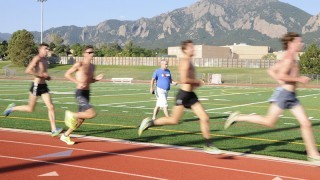
Brad Hudson leads a workout in Boulder, Colorado. Photo: Brian Metzler
Brad Hudson of Boulder, Colo., isn’t shy about sharing training information, and heading into the 2016 U.S. Olympic Trials Marathon on Feb. 13 in Los Angeles, he’s hoping that his open-book policy can help elevate the status of marathoning in the United States—even if it takes a few more years.
“I think that Americans are training very hard and smart,” contends the 49-year-old Hudson. “I just wish there were a little more dialogue. The information is there—that’s why I put the Little Black Book out—but I’ve always felt that if coaches would be willing to share a little more, we’d all be better because of it. Some of the athletes are pretty open with what they’re doing and I like seeing that stuff. I think we’re on the right track, but I just don’t think we’re there yet.”
Hudson, ever the stickler for details when it comes to marathon training, is wrapping up a six-week pre-Trials training camp in Henderson, Nev., with some of the members of his Hudson Elite squad. He’s focused on putting his athletes on track for a solid showing in L.A., but in order to do so, he felt it was important to get away from their high altitude base for a bit so they could better dial in the specific demands of the event. Boulder is situated at 5,400 feet above sea level, whereas Henderson sits at 1,330 feet.
“Altitude is great and Boulder is one of the best places in the country to train,” explains Hudson, who will have eight athletes competing in Los Angeles. “And for a marathon buildup, it really works for the first half or three quarters of the training, but in order to take the mystery out the specific endurance workouts, I felt it was important to go down [to lower elevation] for a few weeks beforehand.”
RELATED: An Excerpt from Coach Brad Hudson’s Little Black Book
Hudson and his crew rented a house in Henderson, and they have been training in the area since early January. They’ll drive from the desert to L.A. for the Trials before heading back to Boulder, where Hudson has been working to fulfill his vision of a training center that can support elite athletes—who in turn can support the local community. In fact, it was the support of the local running community—many of whom are coached by Hudson’s athletes—that helped make his squad’s pre-Trials training camp possible.
“We mostly raised the money through community coaching,” explains Hudson. “All of those funds come back to the team. We also had some donations and raised $10,000 at our gala a couple months ago. We’re probably about two years away from being a really good club that can cover more things for the athletes, but we’re starting to cover more things, like medical expenses, blood work, massage and whatnot. Are we there yet? No, but we’re a lot closer.”
Of Hudson’s eight qualifiers for this year’s marathon trials, four of them are based in Boulder as part of his Hudson Elite training group and meet with him on a regular basis for workouts. Those athletes include Adams State alum Matt Daniels, who will be making his marathon debut in L.A., and qualified with a 63:43 clocking at the Rock ’n’ Roll San Jose Half Marathon last fall; Kara Lubieniecki and Addie Bracy, who ran “A” qualifiers of 2:35:25 and 2:35:55, respectively, at the Cal International Marathon in 2014; and Claudia Becque, a three-time Trials qualifier with a 2:39:12 personal best. Fernando Cabada, who was seventh at the 2012 Trials in a then personal best of 2:11:53, is Hudson’s fastest charge, followed by Carlos Trujillo, who owns a 2:14 personal best. Tera Moody, who was fifth at the 2008 Trials, and two-time Trials qualifier Rachel Jaten of Spokane, are the other two non-Boulder-based exceptions to Hudson’s crew.
“Brad is literally a genius when it comes to marathon training,” says Cabada, who has been bouncing between altitude training in Mexico and sea-level work in his hometown of Fresno, Calif., in preparation for this year’s Trials. “Not only has he had experience on an elite level, he has also done the research. I trust him just off that information alone, but also because he has one of the biggest hearts in the world. He loves to help athletes and has never been in it for the money.”
Coaching for the love of the sport and sustaining an elite racing team fulfills a vision Hudson has had since his early days as a coach. “I knew I wanted to coach from day one,” says Hudson, who in the past has coached U.S. Olympians Dathan Ritzenhein and Jorge Torres, along with Australian Olympian Benita Willis and American marathoner Jason Hartmann, among others. “And once I started coaching, I knew that I wanted an elite training group someday. I wanted it to be on the lines of a professional cycling team without the bad stuff [doping]. It takes time to get the right people. I have some great people around me who all share the same vision and they’re putting stuff together for members to utilize five or six years down the road. I’m thankful that I have people who are on the same page with this vision.”
As an athlete, the hard-working Hudson—who was coached by current University of Colorado headman Mark Wetmore as a grade-schooler—would go on to set a national high school record in the indoor 5,000m as a junior, and later garnered multiple All-American honors at the University of Oregon. He set his marathon personal best of 2:13:24 at Cal International in 1990, the high point of a professional career that was cut short by injury and burnout.
A lifelong student of the sport, Hudson knew he would always make his mark in coaching. In addition to Wetmore, he’s had other top-level mentors along the way, including Pat Clohessey, Arturo Barrios, Mike Manley and Bill Dellinger, among others.
“I was always asking people about training and studying training, and even in high school I was kind of coaching myself a lot, getting workouts from different people,” recalls Hudson, who counts Italian coach Renato Canova, who has led many of Kenya’s top marathoners to world-leading times and high-podium finishes with his specific approach to marathon training, as his biggest influence. “My favorite thing when I was a kid was to read from the training logs of Runner’s World. You never know if you’ll be a decent coach until you actually coach, but I never gave it a second thought that I wouldn’t be coaching.”
RELATED: Coach Brad Hudson’s 1-2-3-2-1 Fartlek Workout
Hudson has had athletes compete in the last three Olympic Games. In 2012, 11 of his athletes qualified for the U.S. Olympic Trials Marathon, with three of those runners—Cabada (7th), James Carney (9th) and Patrick Rizzo (13th)—finishing in the top-15. Despite his own athletes’ successes and improvements, however, Hudson’s ultimate goal is to help elevate the status of American marathoning on the global level. Never one to be shy about sharing training information, Hudson, who still tries to spend an hour a day studying training, believes more runners need to specialize in the marathon from earlier on in their careers to be successful at it. Mastery takes time he says, and so does adapting to the specific demands of marathon training. He also believes that coaches and athletes need to continue emphasizing consistently high training volume, demanding race-specific workouts and an intimate understanding of the role that fueling plays on race day.
“I think it’s a very, very hard event because the training matters,” Hudson told me last summer. “It matters a lot, more so than probably most other events. You can’t get by just on talent because you’ll run out of fuel. The training very much matters.”
“The biggest lesson I have learned working with Brad is that marathon training is hard,” admits Cabada. “I mean, really hard.”
American marathoners are heading in the right direction, Hudson says, and more and more coaches and athletes are realizing what it takes to be world-class in the event. He believes it’s only a matter of time before there are more sub-2:10 and mid-to-low 2:20-type women competing at an international level.
“The only thing we really haven’t been great at is the marathon,” contends Hudson. “And I’m really hoping I can make a difference in that in the next 10 years.”
RELATED: Last Lap with Brad Hudson
The post Coach Brad Hudson Hoping To Help Elevate American Marathoning appeared first on Competitor.com.
How to Watch the 2016 U.S. Olympic Trials Marathon
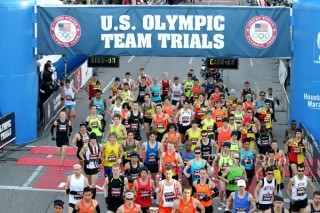
Photo: PhotoRun.net
Coverage of the U.S. Olympic Trials Marathon is better than it’s ever been in 2016. For the first time, both races will air live on network television, in addition to streaming options, through NBC.
Television
NBC will have three hours of live coverage beginning at 10 a.m. PT on Saturday, Feb. 13 (1 p.m. ET). The men’s race will start at 10:06 a.m. in Los Angeles, with the women taking off at 10:22 a.m.
Online
NBC will also live stream the race via the free NBC Sports Live Extra app. You can download the app for free to your smartphone or tablet, and it’s also on platforms like Apple TV and Amazon Fire TV. To access the content, you need to provide login credentials from your television provider. On web browsers, the stream is available at nbcsports.com/live-extra.
In Person
If you’re going to be spectating in Los Angeles, the course setup assures that you’ll see a lot of action. You can line up in one spot along the Figueroa Street Corridor and see the runners pass several times in the span of two-plus hours. The start and finish is in downtown next to the LA Convention Center. A bulk of the race is along Figueroa Street between 11th and 34th Street.
Attendance is free. Inside the LA Convention Center is the health & fitness expo for the next day’s Los Angeles Marathon. It is free and open to the public as well.
The post How to Watch the 2016 U.S. Olympic Trials Marathon appeared first on Competitor.com.
Western States Endurance Run Announces Zero-Tolerance Doping Policy
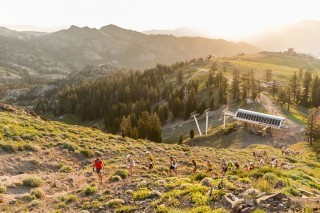
Runners tackling Western State's first climb up the Escarpment as the sun rises in the background. Photo: Matt Trappe
Following growing concerns and conversations around doping in ultrarunning, members of the Western States Endurance Run Foundation Board of Trustees on Saturday voted unanimously to adopt the following new performance rule, now known as “Performance Rule 18,” which reads:
“The Western States Endurance Run has a zero-tolerance policy regarding the use of performance-enhancing drugs (PEDs). Any athlete who has been determined to have violated anti-doping rules or policies, whether enforced by the International Association of Athletics Federations (IAAF), the World Anti-Doping Agency (WADA), U.S. Anti-Doping Agency (USADA), or any other national sports federation is ineligible for entry into the Western States Endurance Run.
“The Western States Endurance Run reserves the right to conduct pre- and post-competition testing for any and all performance-enhancing drugs (PEDs) listed on the current WADA Prohibited List. Any athlete who refuses to submit to anti-doping controls, if selected for testing, shall be disqualified and subject to a lifetime ban from the Western States Endurance Run.”
The announcement comes two months after the uproar surrounding Italian trail runner Elise Desco’s participation at The North Face Endurance Challenge Championships. Desco failed a drug test following the world mountain running championships in 2009, testing positive for EPO, and subsequently served a two-year ban from the IAAF. That ban was up in August 2012 and she has been eligible to compete since. At the TNF50, Desco’s participation was scrutinized by athletes and fans alike on social media. On race day, fans hounded her along the course before she eventually dropped out.
“My final thought is races like The North Face Endurance Challenge need to have the anti-doping tests, at least for the podium finishers,” Desco told competitor.com in December. “The few money for this it’s only an excuse, because it’s enough to cut some prices and eventually add 5 dollars at the entry fee of anyone to find more money. But maybe it’s easier to pull me out from the race and let people run that you never know if they run clean.”
Less than two weeks after Desco’s participation at the TNF50, disgraced cyclist Lance Armstrong’s win at a low-key 35K trail race in California only added gas to the doping-fueled fire. Armstrong, who is serving a lifetime ban from the U.S. Anti-Doping Agency, is slated to take part in a Western States training run in Auburn, Calif., on Feb. 13.
“I think it’s going to be funny to watch and see how people react,” five-time Western States champion Tim Twietmeyer, who is also a board member for the race, recently told the Sacramento Bee regarding Armstrong’s participation in the training run.
Per Western States’ new policy, Armstrong will never be allowed to compete in the actual Western States race, but unofficial, untimed training runs do not appear to fall under Performance Rule 18’s jurisdiction.
Western States “Performance Rule 18” is similar to the World Marathon Major’s anti-doping policy regarding convicted dopers, which states, “In addition to any punishment imposed by the IAAF, national federation or any national anti-doping agency or government, any runner who has been found by such body to have committed a doping offence (at any competition or out of competition) past, present or future, shall be disqualified from the Event and lose eligibility for and has been subject to a ban of 3 months or more, shall be banned from all AWMM Events for life unless otherwise agreed by the AWMM and be ineligible any time to receive any AWMM prize money or AWMM points.”
The post Western States Endurance Run Announces Zero-Tolerance Doping Policy appeared first on Competitor.com.
Photos: Beachside Running at the 2016 Surf City Marathon
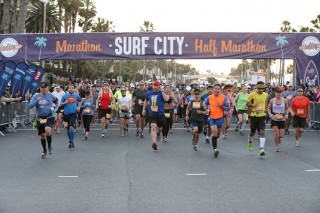
The 2016 Surf City Marathon took runners on a tour of the Orange County coastline in Southern California for its 20th running on Sunday.
About eight miles of the marathon is along a beachfront running path in Huntington Beach, Calif., ensuring spectacular views of the Pacific Ocean. As is custom with the race, all finishers of the marathon and half marathon received a unique surfboard medal.
Here are some photos from the race, courtesy of the Surf City Marathon:
Photo Gallery
1 of {count}
Back to Start
View Larger Image
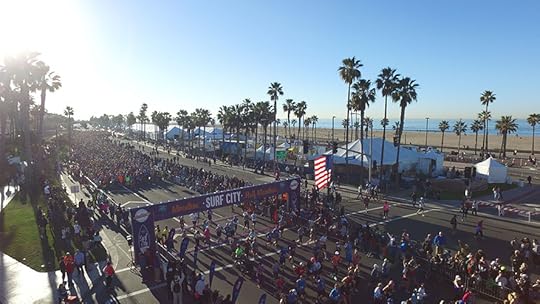
View Larger Image

View Larger Image

View Larger Image

View Larger Image

View Larger Image

View Larger Image

View Larger Image

View Larger Image
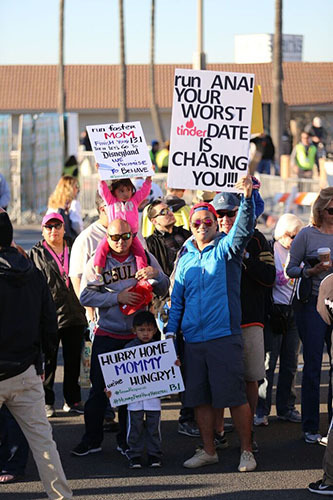
View Larger Image

View Larger Image

View Larger Image

View Larger Image

View Larger Image


More Galleries
The post Photos: Beachside Running at the 2016 Surf City Marathon appeared first on Competitor.com.
Ryan Hall's Blog
- Ryan Hall's profile
- 21 followers



